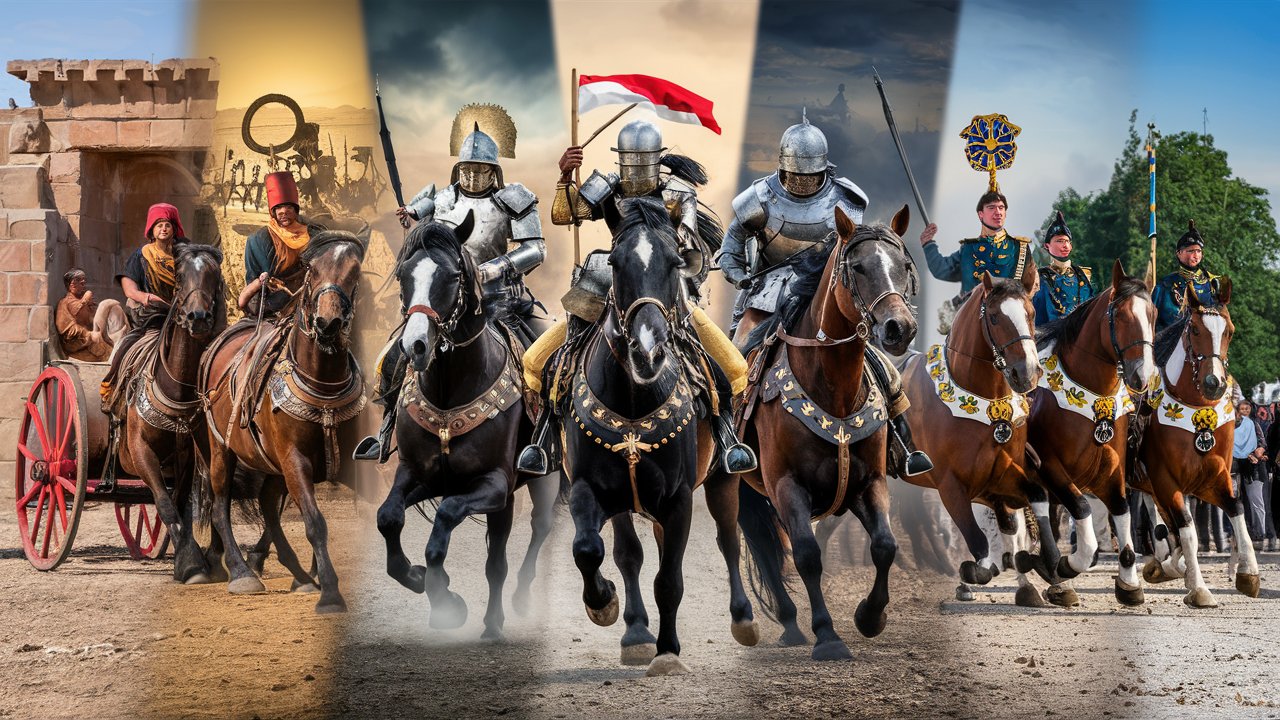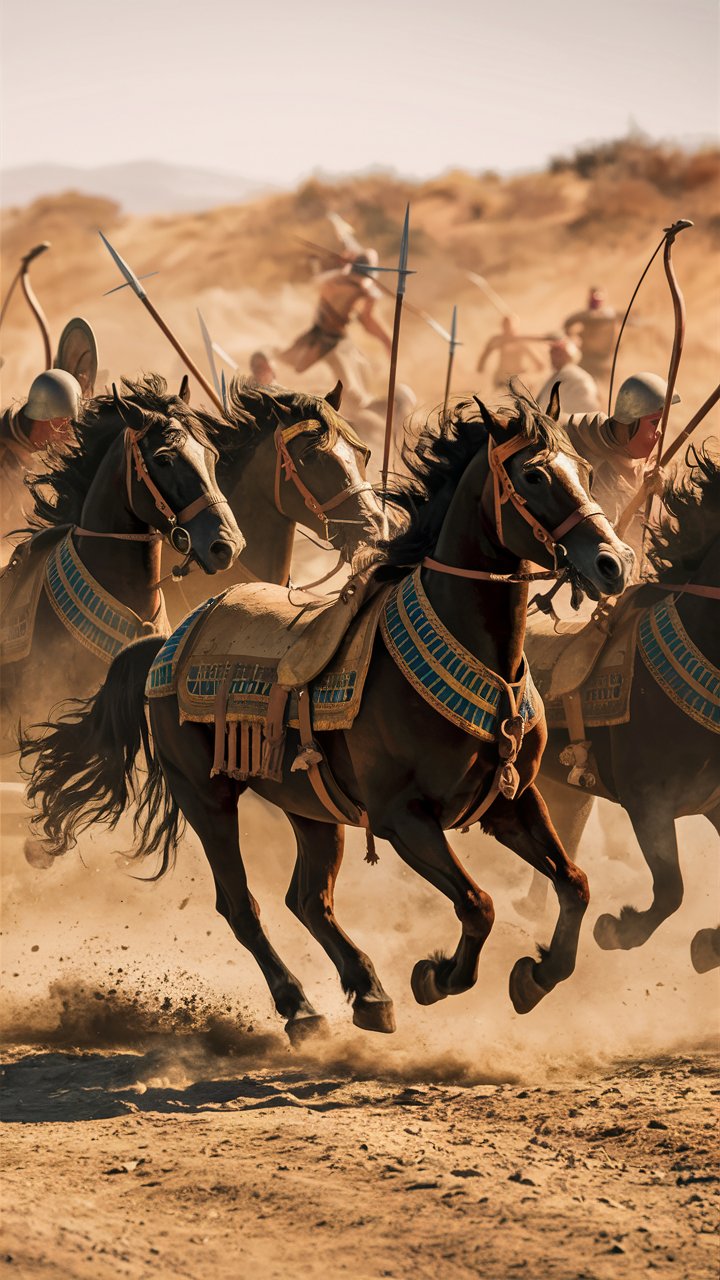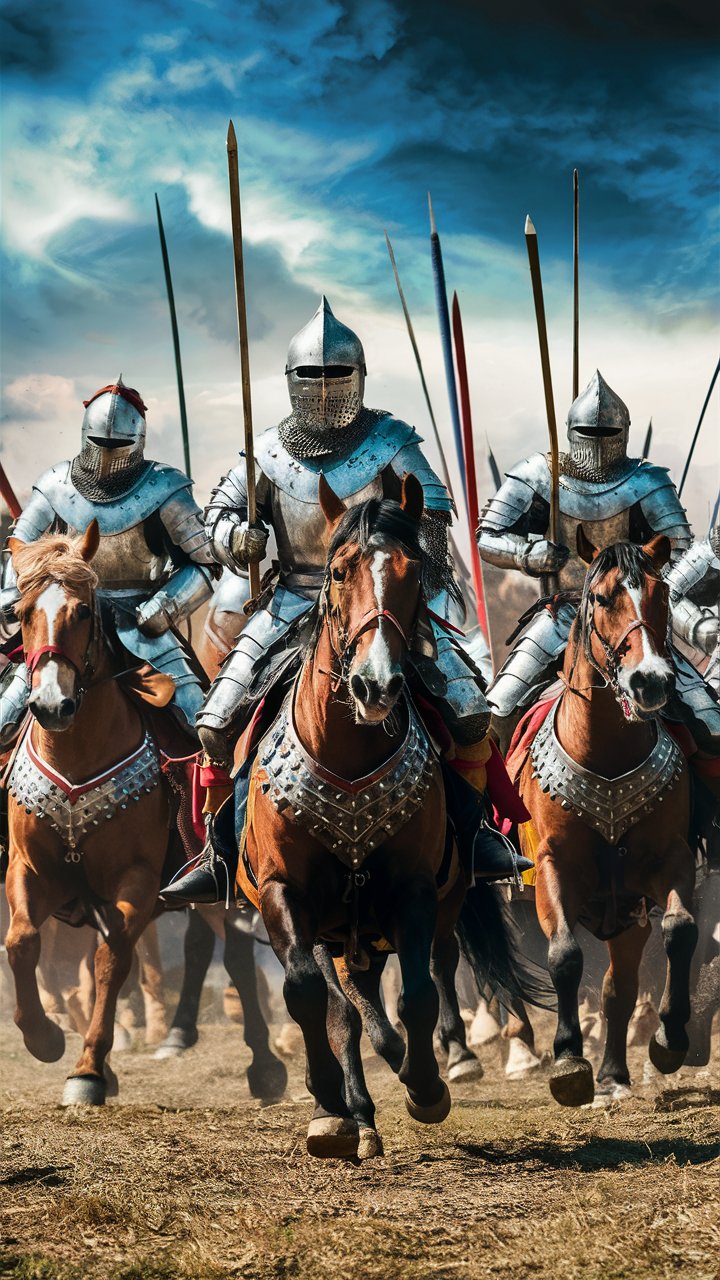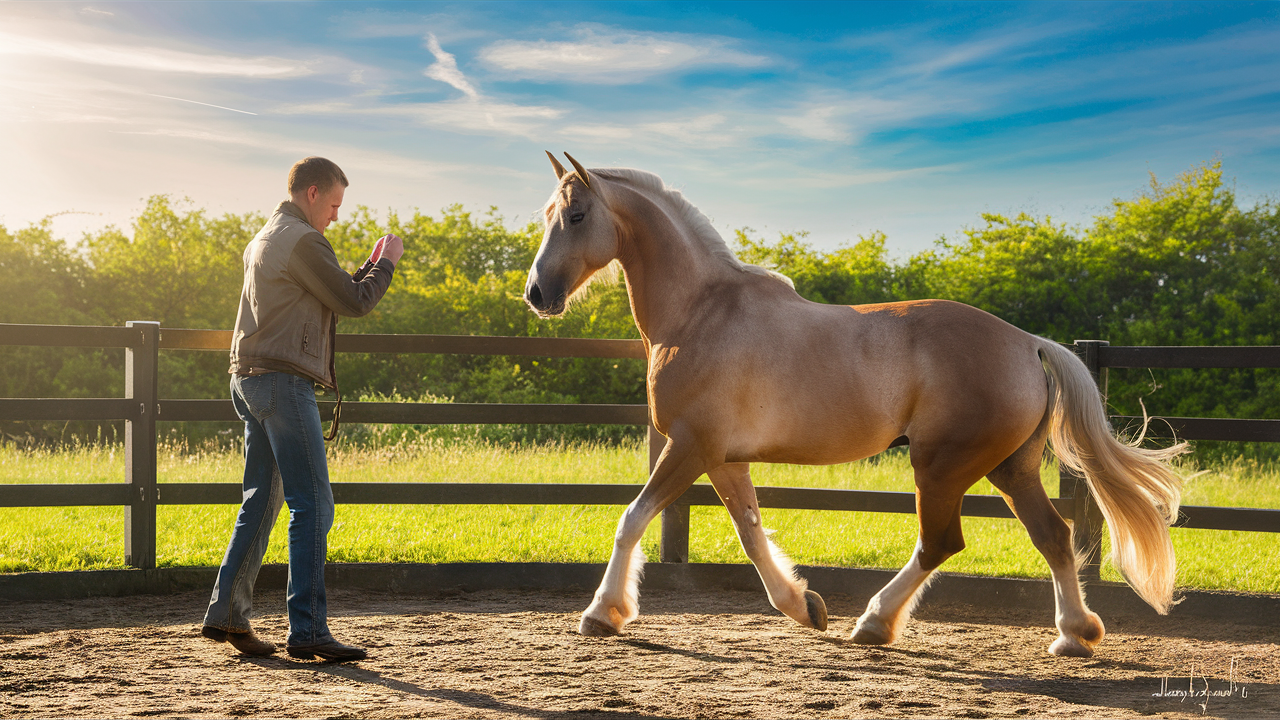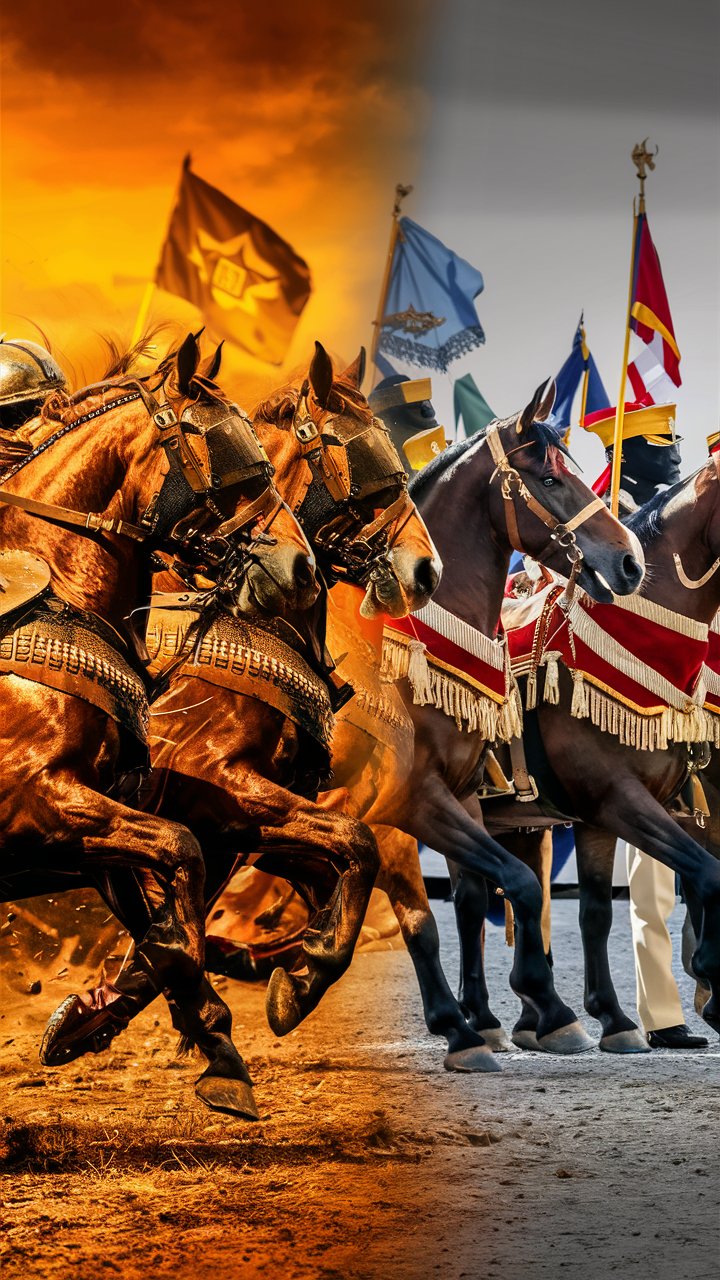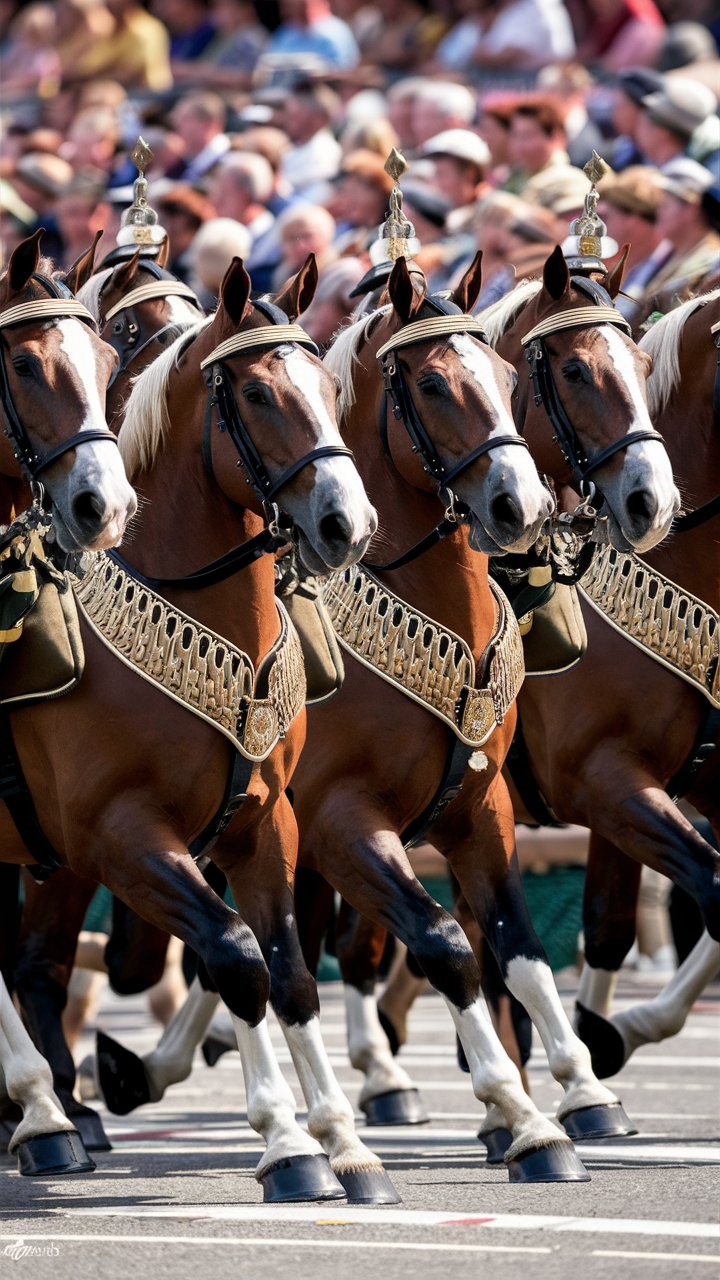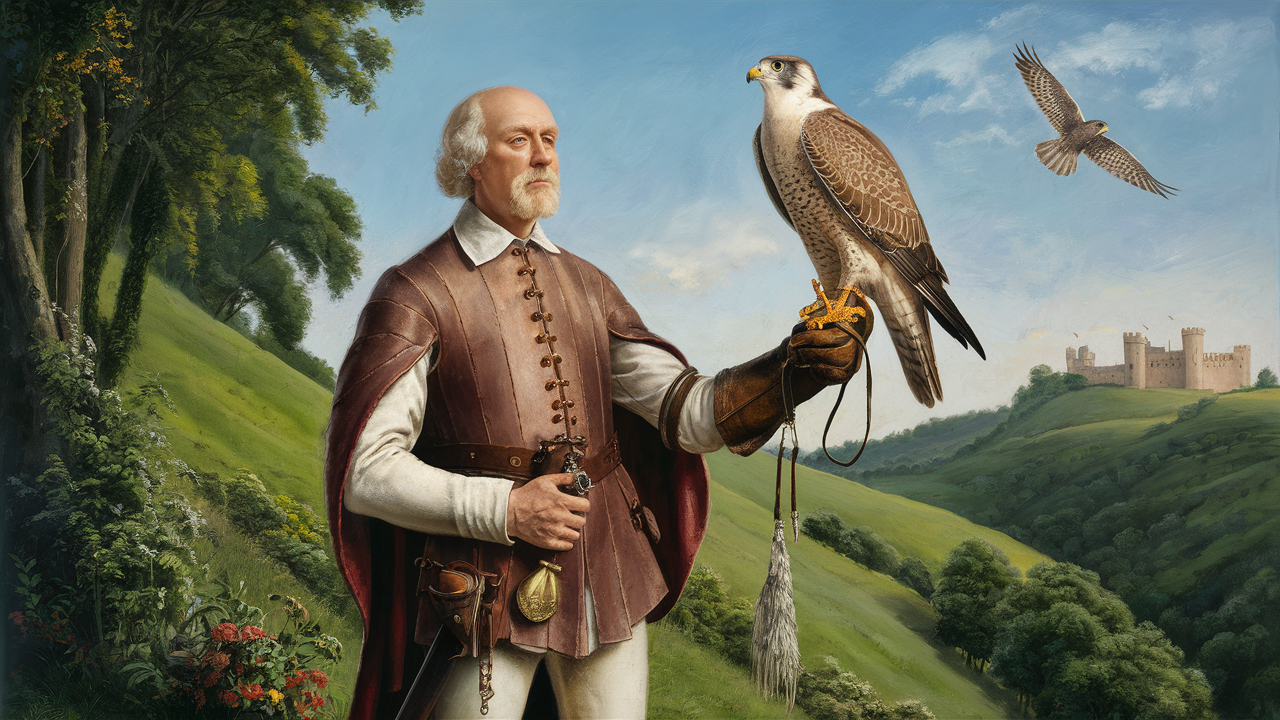Introduction
From ancient battlefields to modern military roles, the use of horses has evolved dramatically, reflecting changes in warfare and technology. Historically, horses and mules played pivotal roles in transport and combat, evidenced by the heavy reliance on chariot horses during the American Civil War and other significant conflicts. These animals were not only essential for moving supply units during the war, but they also shaped the tactics and outcomes of battles throughout the ancient Near East and beyond, being used in warfare as critical assets.
Today, the role of horses has shifted from traditional battlefield engagements to specialized areas such as ceremonial duties and therapeutic settings. Despite the reduction in direct combat roles, the value of horse breeds, including the iconic Arabian horse, remains evident. Their versatility enables them to serve in horse cavalry detachments and police mounted units, proving that these majestic creatures still hold a crucial place within the modern military landscape.
Key Takeaways
- Horses have historically transformed military tactics and outcomes, serving essential roles from transportation to key components of cavalry units across various cultures and periods.
- Chariot horses in ancient civilizations like Mesopotamia and Egypt were crucial, providing mobility and speed that shaped early warfare strategies.
- In the medieval era, warhorses symbolized chivalry and were central to the effectiveness of cavalry charges and direct combat.
- War horses were indispensable in large-scale military logistics, facilitating the transport of supplies and troops, and playing vital roles in the evacuation of the wounded.
- The 20th century’s technological advancements led to a significant shift from traditional combat roles for horses to specialized functions, including ceremonial duties and modern military and police operations.
- Despite the decline in direct combat roles, horses continue to contribute uniquely in areas like equine-assisted therapy and maintain their relevance in modern military strategies.
The History Growth of Horses in Battle
Draught horses and other breeds have been integral to military history, shaping warfare strategies profoundly. Their speed, strength, and endurance made them invaluable, initially for transportation and later as crucial elements of cavalry units. This section explores the historical significance of horses used in warfare, highlighting roles across various periods and cultures. From the domestication of the horse to their use in modern military strategies, understanding the evolution of these roles offers insight into their impact on military tactics and outcomes.
Ancient Civilizations and Warhorses
In ancient civilizations, horses and riders were indispensable in warfare, particularly for pulling chariots in regions like Mesopotamia and Egypt. These early warhorses, often seen showing horses their prowess, provided a crucial tactical advantage with their mobility and speed, enabling swift movements across battlefields. Highly prized for their abilities, these animals became symbols of power and military might, often reflecting the number of horses a society could muster for battle. Their involvement was pivotal in numerous historical conflicts, shaping the military strategies and outcomes of ancient societies. This foundational use of horses in combat underscores their enduring significance in the annals of military history.
Medieval Knights and Cavalry Charges
During the medieval era, the significance of the warhorse evolved into a symbol of chivalry and martial prowess among knights. These heavily armored warriors relied on their four horses for effective cavalry charges, which were critical in breaking enemy lines during battles. This period saw significant advancements in the breeding, training, and armoring of horses, efforts aimed to use horses more effectively in warfare. These developments, including the use of the horse collar, emphasized the central role of warhorses in medieval military strategies and demonstrated their continued importance in shaping the tactics and outcomes of warfare, particularly as the end of the war approached.
Battlefield Duties of War Horses
War horses have been essential in military operations, serving not only as instruments of war but also as critical components of logistical support and direct combat across various civilizations. Their roles on battlefields demonstrate their historical significance and strategic value, often used in war for more than just combat. This section highlights the multifaceted duties of war horses, from riding horses in charge to their role in pulling war chariots as seen in archaeological evidence of horses used in warfare. Their ability to adapt to various military needs, from serving as horse guards to carrying heavy loads, shows their versatility and enduring importance.
Key Roles of War Horses in Military History:
-
Logistical Support: War horses were vital for transporting supplies, ammunition, and food across difficult terrains, often enabling sustained military operations and quick tactical responses during battles.
-
Cavalry Charges: Essential to medieval warfare, horses were used in cavalry charges that were instrumental in breaking enemy lines, utilizing their speed and the element of surprise to overwhelm opponents.
-
Mounted Combat: Beyond charging, horses were directly involved in combat, allowing knights and soldiers to engage enemies from horseback, which was a significant advantage in close combat scenarios.
-
Evacuation and Medical Support: In their role as part of field medical units, horses helped evacuate wounded soldiers from the battlefield, highlighting their importance in the recovery and care aspects of military logistics.
-
Symbolic and Ceremonial Roles: As warfare evolved, the role of horses also shifted towards more ceremonial purposes, where they symbolize tradition and honor in military parades and official duties.
Transportation and Supply Carriage
In the vast operations of warfare, war horses were indispensable for their ability to transport supplies and troops across challenging terrains. They carried essential items like ammunition, food, and medical supplies, facilitating sustained military campaigns. Additionally, horses were used to move troops swiftly, enabling flexible responses to battlefield conditions. Their role in evacuating the wounded through field medical units further highlights their critical importance in military logistics, ensuring not just the supply of resources but also the care and recovery of soldiers.
Cavalry Charges and Mounted Combat
Beyond their logistical capabilities, war horses were central to the success of cavalry charges and mounted combat. These horses brought shock and awe to the battlefield, overwhelming enemies with their speed and the force of armored knights. Their agility allowed for tactical flanking maneuvers and rapid repositioning, giving armies a considerable advantage in open combat. Moreover, war horses enabled effective close combat, allowing knights to engage enemies directly from horseback, thus defining many medieval battles and military strategies.
Impact of Technology on Horses in Warfare
The introduction of modern technology has dramatically transformed how horses were used in warfare, marking a pivotal shift from traditional combat roles to more specialized functions. Throughout the 20th century, as warfare became increasingly mechanized, horses transitioned from front-line combat to support roles, such as pulling small war chariots or serving in formal national militias. This evolution not only reflects broader changes in military strategies but also the advent of new technologies that replaced many tasks horses were needed to pull. Notably, the training manual for war horses and first archaeological evidence of horses suggest their continued albeit adapted use in military contexts, even as some roles phased out after World War II.
Transition to Mechanized Warfare
The 20th century brought about radical changes in warfare technology, significantly impacting the role of horses in military contexts. The introduction of tanks and motorized transport reduced the need for cavalry, as these machines could fulfill many of the roles previously carried out by horses with greater efficiency and less risk. Additionally, the development of anti-horse weapons increased the dangers for horses on the battlefield, further diminishing their role in direct combat. This transition to mechanized warfare marked the beginning of the end for the widespread use of war horses in battle.
Modern Day Military Roles
Despite the decline in their combat roles, horses still maintain important functions within modern military operations. In regions with difficult terrains, such as mountains and forests, horses serve as effective patrol units where motorized vehicles would be impractical. Furthermore, horses hold ceremonial roles, symbolizing tradition and honor in various military parades and functions. They are also invaluable in search and rescue missions, navigating challenging landscapes where modern technology may falter. These roles highlight the continued relevance and versatility of horses in today’s military strategies.
“The impact of advances in technology on the conduct of warfare can be characterised into a number of dominant trends, namely, quest for extension of range of weapons, volume and accuracy of fire, system integration, concentration of maximum fire power in smaller units and increasing transparency in the battlefield.” — Strategic Analysis: Impact of Technology on Conduct of Warfare
Battlefield War Horse Partnerships Today
The partnership between humans and horses continues to evolve in contemporary settings, especially in areas beyond traditional warfare. Today, horses are integrated into military and police units, offering unique operational benefits and also playing crucial roles in therapeutic settings for rehabilitation and emotional healing. This section delves into the modern roles of horses, highlighting their adaptability and diverse contributions, from being part of formal national militias to aiding in scenarios where horses could pull greater weight. Notably, horses in this class, such as the war horse of the moors and those used in World War II, demonstrate their continued relevance in varied and modern capacities.
Military and Police Mounted Units
Horses maintain a crucial role in public safety within military and police operations, adapting to modern needs while offering unique advantages. Mounted units are particularly effective in crowd control, where their height and presence can be more commanding than foot patrols. In urban environments, they improve visibility and can navigate spaces inaccessible to vehicles, making them invaluable for patrol and search operations. These capabilities ensure that horses remain relevant in modern military and police strategies, providing a blend of traditional and contemporary benefits.
Therapeutic Benefits of Equine-Assisted Therapy
Beyond their role in security, horses are pivotal in therapeutic programs, offering significant emotional and physical benefits. Equine-assisted therapy has become a recognized method for addressing a range of conditions, including trauma, PTSD, and various physical rehabilitation needs. Through interactions with horses, individuals experience improvements in motor skills, coordination, focus, and mental clarity. This form of therapy not only highlights the versatility of horses but also underscores their continued importance in human health and wellness.
[lasso rel=”amazon-55″ id=”5525″]
Conclusion
Throughout history, the roles of horses in warfare have evolved significantly, transitioning from essential combatants in ancient and medieval battles to more specialized roles in modern contexts. As war horses, they were crucial for transporting supplies and executing cavalry charges, while today they contribute uniquely to ceremonial duties and equine-assisted therapy. Their enduring relevance in both traditional and contemporary settings highlights the versatile and pivotal role of horses in military history and beyond.
Despite the decline in direct combat roles, the profound legacy of horses is evident in various modern military and police operations. Whether serving in mounted units or as part of therapeutic programs, horses continue to showcase their broad capabilities. The enduring value of these majestic animals underscores their importance, from the American Civil War to current day, reflecting their unyielding spirit and adaptability.

